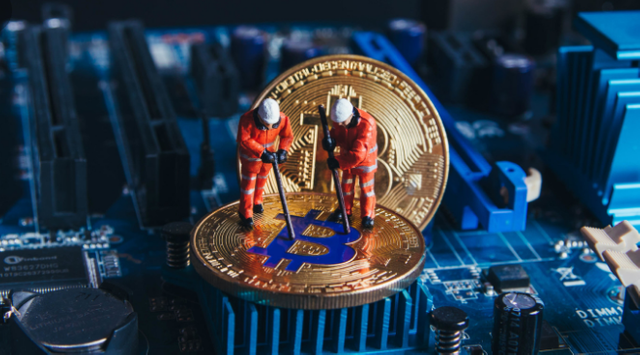STEEM CRYPTO ACADEMY WEEK 4 HOMEWORK POST FOR @besticofinder – INTRODUCTION TO CRYPTOCURRENCY MINING
Thank you so much professor @besticofinder for the lectures. I've always loved your simplistic steps in explaining the terms.
Here is my homework task on how crypto mining works, mining difficulties and challenges faced by crypto miners.
Cryptocurrency mining is the process of solving cryptographic equations through the use of computers and gaining cryptocurrencies as a reward. This process involves validating data blocks and adding transaction records to a public record (ledger) known as a blockchain.
In a more simple term, it could be referred to as the process of gathering cryptocurrency as a reward for the task that you completed.
HOW CRYPTOCURRENCY MINING WORKS
The cryptocurrency blockchain is built on the basis of Transactions. Therefore, once a transaction is initiated in the cryptocurrency blockchain, there is need for the legitimacy of such transactions to be verified. And since the cryptocurrency blockchain is decentralized, verification could only be done by miners.
For instance if a person (say Mr. A) is owing another person (say Mr B), and is willing to pay with cryptocurrency, Mr A will initiate a transaction by sending the cryptocurrency (say Bitcoin) to Mr B.
Once the money is received, the transaction is being bundled into a block (unconfirmed block of data).
Once enough transactions are added to the block, additional info is added as well, including the header data and hash from the previous block in the chain and a new hash for the new block. Combining the header of the most recent block and a nonce would generate a new hash which will be added to the unconfirmed block.
Here, miners carry on with the verification by solving some cryptographic equations and validating the data blocks.
When the verification is done, the transaction would be added to the blockchain and a permanent, public record is created. This record is immutable, meaning it can never be manipulated or altered.
Note: Nodes are the individuals and devices that exist within the blockchain (such as your computer and the computers of other cryptocurrency miners).
Miners could be referred to as the people (commonly known as nodes in this case) who take up the task of verifying the unconfirmed blocks by solving the equations to arrive at a solution.
Hashes are those functions which are followed by each node to verify the transactions that formed the basis of this mining process.
And lastly, Transactions are the basis of initiating the mining process.
CRYPTOCURRENCY MINING DIFFICULTY
To mine a cryptocurrency requires time and specific techniques. Finding the right answer or solution to the equations and the time needed to make these verifications constitute mining difficulty.
The requirement each hash must meet has a corresponding difficulty: and for a hash to be valid, it has to be below an automatically set target. The lower the target value, the higher the difficulty in getting an acceptable result.
It is possible for a miner to get lucky and obtain a valid hash for a given block on the first try: but over time, but it may not always be the case as they progress.
CHALLENGES FACED BY CRYPTOCURRENCY MINERS
There are various challenges encountered in crypto mining, such as;
Difficulty in solving a complex cryptographic puzzle.
The difficulty of mining new units increases or decreases over time, depending on the number of miners in the network.
Difficulty of keeping the target block time, etc.
Solving the mathematical puzzle to create a new and valid block require large computational power. Because the difficulty is rising continually, miners have been left with no option than to join forces in Bitcoin mining pools and solve the mathematical puzzles together.
Also, in terms of competition, Miners compete against each other for limited block rewards. With more participants and more computing power, the so-called “hashpower” of the entire network increases accordingly. This also is another challenge faced by cryptocurrency miners.
High Energy Costs
Maximizing successful mining chances would need the combination of numerous ASICs in solving a problem. This however requires extreme high power output which of course cost a high electric fee.
There are more of these challenges which I cannot cover in this post.
Thank you for this opportunity and thank you for your time. I appreciate!
Steem on! Cheers!!


Hello @senicbliss ,
Your article is with plagiarism.
Original Source
Original source
Please write only original content !
Thank you
@besticofinder I'm so sorry about that, I should have quoted those texts, but since I did not, those parts have been edited. Please check if it is okay now.
Thank you for your friendly corrections